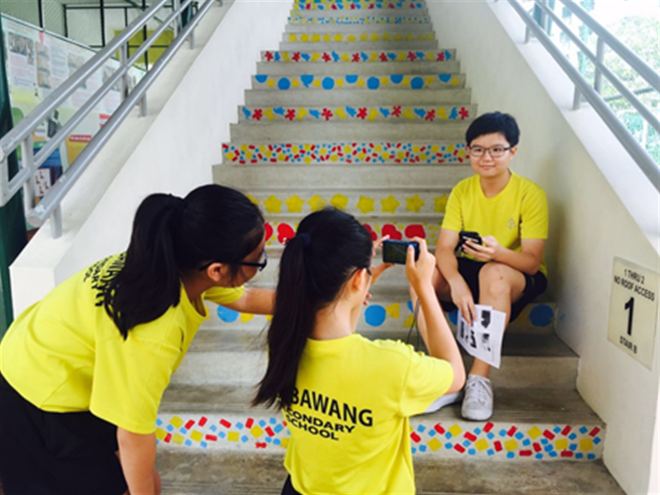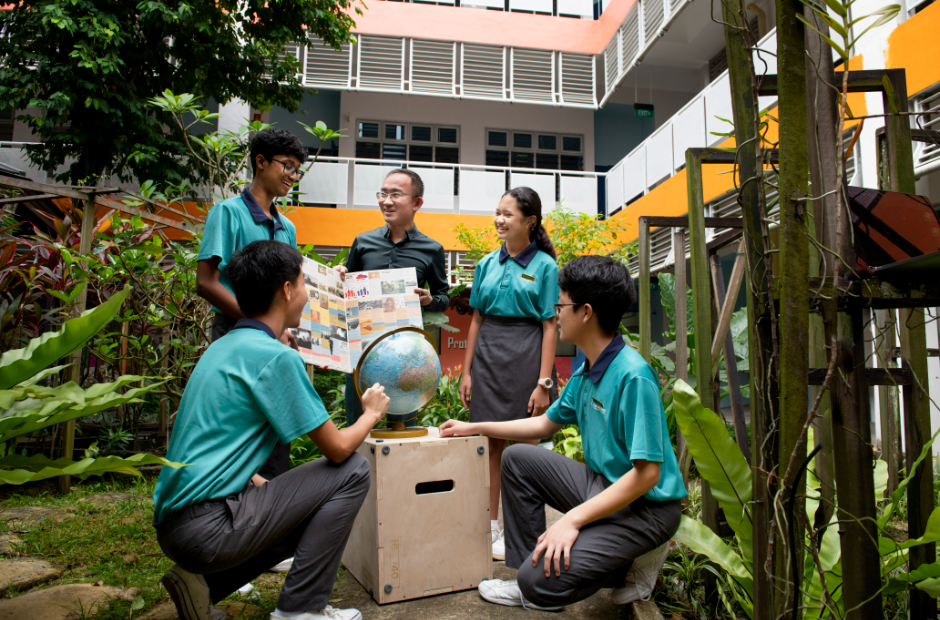Ready for the digital world
02 Dec 2016

At Sembawang Secondary School, students are picking up media literacy skills through unexpected subjects.
Imagine you’re an immigrant working in Singapore in the 1800s and you want to write a letter back home to your family. Or perhaps imagine you’re a member of the British colonial administration in the same era and your task is to design a poster to attract immigrants to come work here.
Sounds intriguing? These are just some of the assignments Sembawang Secondary School students have worked on as part of their Media Literacy-infused History lessons.
The school started its Applied Learning Programme, or ALP, in Media Literacy last year. The programme is currently incorporated into the Secondary 1 and 2 History and Geography syllabuses and will include Secondary 3 Social Studies next year.
Mr Puah You Kai, who is in charge of the school’s ALP, estimates that three-quarters of the lessons involve media literacy skills and knowledge. “We still need some conventional lessons to prepare them for exams,” he says. “However, the skills that we’re testing are similar skills we’ve been teaching in terms of media literacy, for example, assessing reliability of information and how to convince an audience of a message.”
In Secondary 1, students focus more on interpretation and creation of still images, as well as collaborative tasks. The immigrant letter project doubled up as a lesson on working as a group using Google Docs, while the poster they designed as “British colonial officers” was also a lesson on how to use online poster tools.
In Secondary 2, the focus is on moving images as well as an introduction to infographics, while in Secondary 3, students will be expected to use all the skills they’ve learned so far.
Making information meaningful
With so much content readily available online, Mr Puah believes it’s important to teach students how to have meaningful access to information, which essentially means being able to sieve through the noise and identify truthful and relevant material.
He explains that the school’s teaching of Media Literacy encompasses three broad areas. The first is media reception, which teaches students how to make sense of information they find online and how to ascertain its reliability. The second is media creation, where students are taught to produce videos, posters and infographics.
The final area is digital productivity, which the school has identified as one of the skills students need to excel in the 21st century workplace. For example, students learn how to use Boolean operators in their online searches, which are simple words like “and”, “or” and “not”, in order to narrow their search results.
Lessons for real life
The pioneer group of ALP students is now in Secondary 2, where they are currently working on a short video project for Geography due at the end of the first term. They have to imagine themselves as government officers who have to research the housing estate they’re overseeing and then present the information to their bosses in a video.
In an effort to get credible information, one student, 14-year-old Sundaravadivel Pranav, and his team got in touch with some MPs to request for interviews. A few of them declined but the students eventually managed to score an interview with one of them.
“Our aim is to create these enablers for students to do real life tasks of their own. Along the way, they figure out that real life doesn’t always go so nicely because you might face rejection. But that’s part of learning because life doesn’t flow so smoothly all the time, whereas in a controlled class environment, you don’t really get that kind of opportunity,” explains Mr Puah.
For fellow Secondary 2 student Dean Tan Wei Jie, the video project is a way to apply all the skills they have learned so far. “This project doesn’t only determine our Geography grade, it also shows us how much we have learned. We learned how to create bar graphs and charts, how to create questionnaires, conduct interviews and talk to people – all the skills we can use in real life,” he says.
“Media literacy for me doesn’t only involve computers, it also involves communicating with people,” says Sundaravadivel. “We had to get people to talk to us for this project. How do you persuade someone to do an interview? Who can answer your questions? Also, in the beginning, my teammates and I weren’t familiar with each other. So I said to them, let’s act like we’re friends and we’ll become friends. That improved our communication skills and the way we saw things.”
A rocky start and a bright future
A survey of the students after the programme’s first year showed an encouraging 93 percent satisfaction rate. Students said they felt very engaged and were able to apply a lot of what they learned in real life.
But it wasn’t all smooth sailing in the beginning. There was “a healthy bit of skepticism” among some of the staff when the proposals were first brought up. Some of the teachers were worried that the students would not be able to cope and would need a lot of handholding. “But what we’ve showed last year was that we could do it. And the students have benefited,” says Mr Puah.
Mdm Doreen Lim, HOD of Humanities, concurs: “Thanks to ALP, students are able to see the relevance of Media Literacy, not just in Humanities subjects, but as a life skill. When they look at social media, they are more critical of reading beyond the surface level and they’re savvier with digital media. Initially it seems like ALP and Humanities is an odd marriage but it actually lends itself well.”


.jpg)


.jpg)